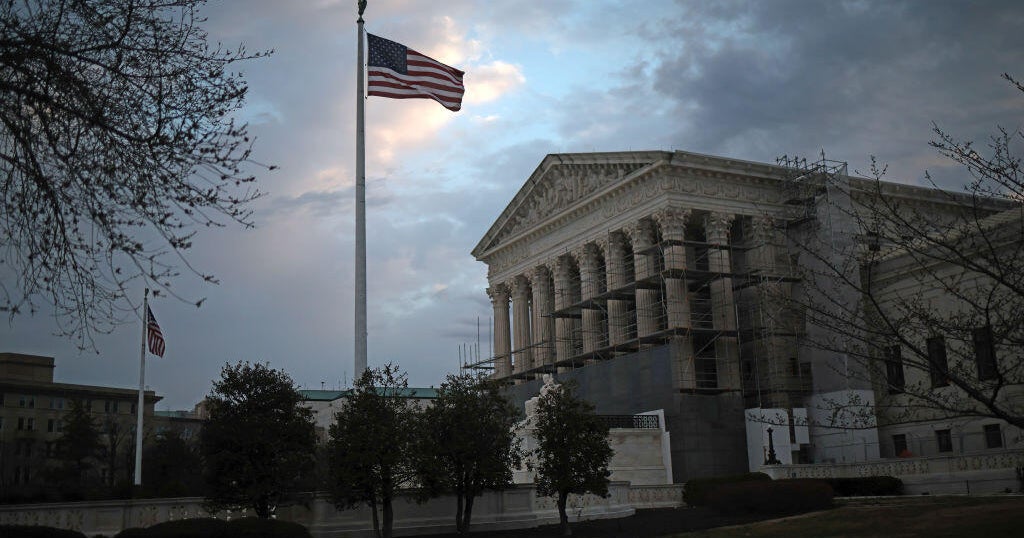Intelligence community issues inconclusive report about origins of COVID-19
The U.S. intelligence community remains divided about the origin of COVID-19, according to an unclassified summary of its 90-day investigation into the matter. All agencies agreed that two hypotheses are possible – natural exposure to an infected animal and a laboratory-associated incident.
But the report failed to draw a definitive conclusion and issued its main findings with low or moderate confidence, citing impediments stemming from the Chinese government's refusal to share essential data.
"The [intelligence community] judges they will be unable to provide a more definitive explanation for the origin of COVID-19 unless new information allows them to determine the specific pathway for initial natural contact with an animal or to determine that a laboratory in Wuhan was handling SARSCoV-2 or a close progenitor virus before COVID-19 emerged," the report, released Friday by the Office of the Director of National Intelligence, said. SARSCoV-2 is the virus that causes COVID-19.
The Wuhan Institute of Virology (WIV) became the site of intense scrutiny after reports emerged that U.S. officials had previously warned of safety issues at the lab, and that three of its researchers sought hospital care for a flu-like illness in November of 2019.
"China's cooperation most likely would be needed to reach a conclusive assessment of the origins of COVID-19," the report said. "Beijing, however, continues to hinder the global investigation, resist sharing information and blame other countries, including the United States."
In a statement, President Biden doubled down on criticism of the Chinese government for obfuscating "critical information about the origins of this pandemic."
"The world deserves answers, and I will not rest until we get them," Biden said. "Responsible nations do not shirk these kinds of responsibilities to the rest of the world. Pandemics do not respect international borders, and we all must better understand how COVID-19 came to be in order to prevent further pandemics."
There were some areas of broad agreement in the report, including that the virus was not developed as a biological weapon and that Chinese officials did not know about the virus before the outbreak occurred. It also concluded that the virus likely emerged and infected humans initially through a small-scale exposure that occurred no later than November 2019, with the first known cluster of cases arising in Wuhan in December of 2019.
In what appeared to be a slight splintering of views, two agencies said there was not sufficient evidence to determine whether the virus was genetically engineered; a previous ODNI statement from April 2020 had ruled that scenario out.
Four intelligence agencies and the National Intelligence Council, which draws on expertise from academic and private sector experts, said with low confidence that the initial infection was most likely caused by natural exposure to an animal infected with it or a close progenitor virus. One agency said with moderate confidence that the first human infection of the virus was the result of a "laboratory-associated incident," that could have involved "experimentation, animal handling or sampling" at the Wuhan Institute of Virology.
Still, three agencies remained undecided, choosing not to back either explanation. The report did not specify which agencies took any given view.
U.S. intelligence officials have long downplayed the likelihood that the 90-day inquiry would arrive at a definitive conclusion, chiefly citing stonewalling from Beijing.
In an interview with Yahoo News in June, Haines warned that evidence constituting a "smoking gun" could never materialize.
"The best thing I can do is to present the facts as we know them and to present the analysis that we've done in as unbiased a way possible," she said at the time. "We're going to do our damnedest to try to get an answer."
Haines also said the intelligence community took a uniquely rigorous approach to examining the issue, consulting outside experts and foreign partners and using "red cells" - teams of analysts who would stress-test any standing assumptions - to arrive at new insights.
A classified version of the report was delivered to the White House and briefed to President Biden earlier this week, a senior administration official said. Mr. Biden had asked the community to "redouble" its efforts to identify where the virus originated in May.
The unclassified findings highlight how elusive answers remain without input from Beijing, which has stridently denied the possibility the virus escaped from the Wuhan lab, and rejected international probes into the start of the outbreak.
Chinese Foreign Ministry spokesman Wang Wenbin said Thursday, before the U.S. intelligence community report's findings emerged publicly, that it was an exercise in politics, not science. "It is a matter of science that should be studied by scientists, not manipulated by politicians or intelligence services," Wang said.
China's government said last month that it would not cooperate with additional investigations by the World Health Organization, whose first inquiry into the matter declared the lab leak scenario "extremely unlikely" but was later dismissed by WHO Director General Tedros Adhanom Ghebreyesus as "premature."
There have been multiple other U.S. inquiries launched into the virus's origins. During the Trump administration, former Secretary of State Mike Pompeo established a task force, since disbanded, that was charged with investigating the possibility the virus escaped from the Wuhan lab. Mr. Pompeo has said "enormous" amounts of evidence, which he has not described, supports that theory.
Republicans on the House Committee on Energy and Commerce also launched an independent review, and other lawmakers have called for a 9/11-style commission to investigate how the outbreak started.
It was not immediately clear whether the White House planned to order an additional inquiry into the matter.
The COVID-19 pandemic has already claimed more than 4 million lives worldwide, with the highly infectious Delta variant of the virus adding to its toll amid a rapid spread through vulnerable and unvaccinated populations. Insight into how the virus first infected humans is crucial to preventing and containing future outbreaks, according to public health officials.



